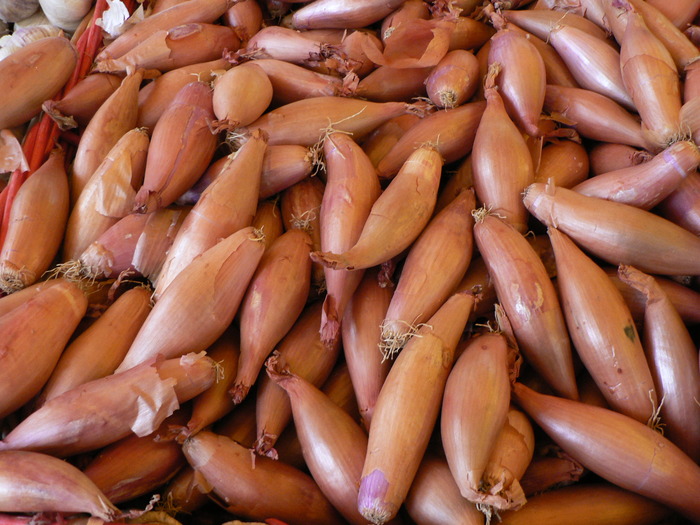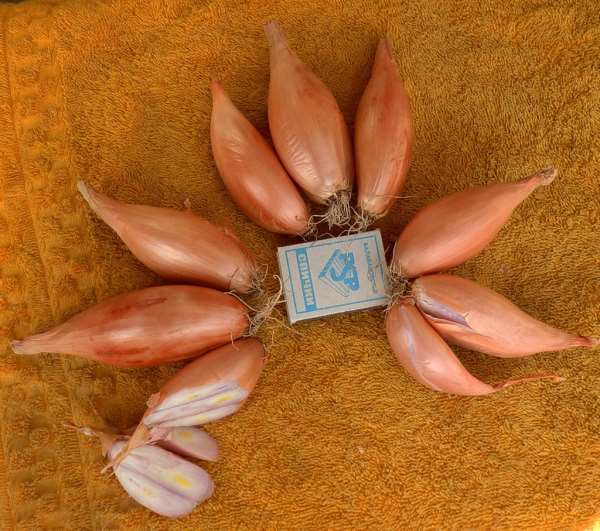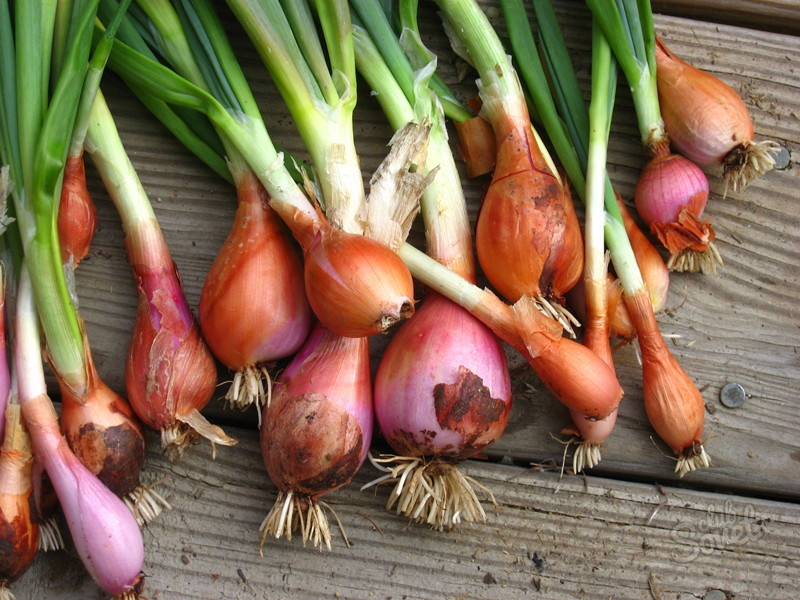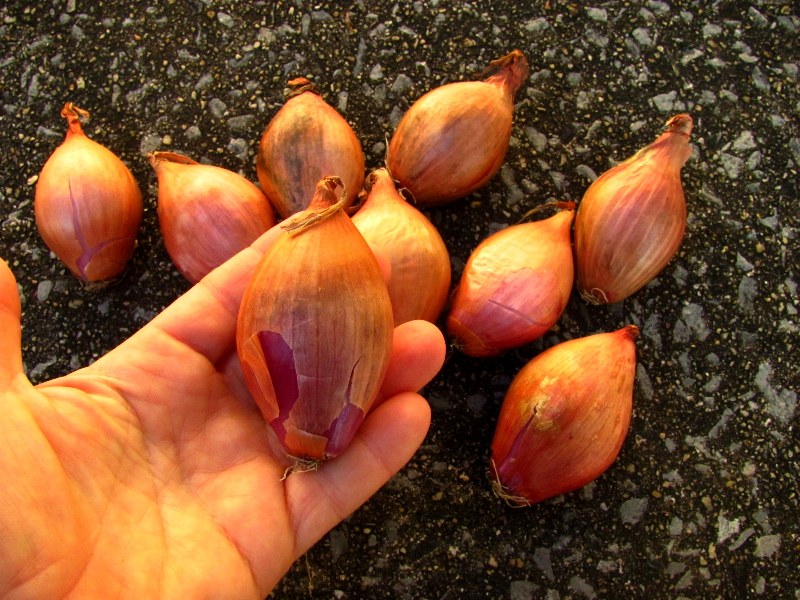Shallots: features and cultivation
Content
Varieties
Shallot onion varieties differ from each other in fertility, ripening times, resistance to disease and frost, as well as taste and color of the pulp of the bulbs. Based on the brief characteristics, you will be able to select the seeds that are most suitable for your climatic conditions and corresponding to your needs.
The Chapaevsky variety has juicy light purple bulbs. In the nest, from 3 to 8 heads weighing 40 grams are formed. The variety is classified as mid-season, since the growing season takes about 66 days. Resistant to pyronosporosis. Up to 20 tons of crops can be harvested from 1 hectare. Suitable for growing in the central regions of Russia.
Shallots Shallots are considered one of the most productive hybrids. One plant can produce up to 10 bulbs. This variety practically does not produce arrows and is resistant to rot. The bulbs are similar to onions in that they are round and colored white on the inside and golden yellow on the outside. The earring is already harvesting on the 58th day of the growing season. Suitable for growing in all areas.
In the Lower Volga District, the Kubansky yellow variety has proven itself well. The bulbs grow quite small and flat - 25-30 grams each. At the same time, up to 20-27 tons of crops can be harvested from 1 hectare with proper care and suitable weather conditions. Kuban yellow shallots are classified as mid-season varieties. The growing season lasts from 80 to 96 days.
For growing at home, as a two-year crop, the Ayrat variety is best suited. From 1 square meter, an average of one and a half kilograms of harvest are obtained. The bulbs are small, 15 grams each. The heads are round. 5-6 bulbs are formed on 1 plant. For winter planting, choose the Albik variety. His fruits are greenish inside. The bulbs grow up to 30 grams. Keeping quality indicators are excellent. In the nest, from 3 to 8 transverse elliptical bulbs are formed. In terms of growth rate, Albic shallots grow in 60-65 days.
There are many other hybrids. So for dry areas with a low level of humidity, the varieties Konak, Zvezdochka, Zaporozhye, Russian violet are suitable. In the conditions of Siberia, the Far East and the North, the varieties Sprint, Sir-7 and Siberian yellow showed themselves best.
Video "Features of the variety"
Growing in soil
The cultivation of shallots in the ground is carried out with seeds, which are popularly called sevka. In general, the conditions for it are the same as for onions. The soil should be slightly acidic with a high content of compost, therefore, during the autumn preparation of the soil, manure should not be spared. To make the shallots grow well, 2-3 buckets of humus or compost are poured onto 1 square meter of the plot. Mineral fertilizers are also added. For the same volume of soil, 70 grams of superphosphate and potassium sulfate are taken.
It is best to sow shallots after legumes.It is necessary to plant sevok in open ground only after the departure of winter frosts. If you are planting under winter, then the timing is calculated in such a way that before the onset of frost the seeds have time to take root, but do not begin to germinate. Before planting, it is necessary to carry out mandatory seed preparation.
First, the entire set must be sorted out and all illiquid assets must be discarded. Good shallots can only be grown from healthy seeds. All heads with signs of rot, black spots, fungus, as well as dry and damaged bulbs should be sent to the trash can. For sowing, choose bulbs with a diameter of up to 3 centimeters.
If you kept the seedlings in a cool place all winter, then before planting such seeds need to be warmed up at a temperature of + 20- + 25 ° for 1 week. Immediately before planting, the seedlings are dipped for half an hour in a weak solution of potassium permanganate or wood ash. This procedure allows you to protect the seeds and the future plant from diseases and pests.
For planting, you should prepare moistened ridges with a depth of 10 centimeters. Shallots are planted 10 centimeters apart. There should be at least 30 centimeters of free space between the rows. There should be about 3 centimeters of soil between the top of the seed and the surface of the earth. Immediately after planting the seeds, mulching should be carried out to keep moisture in the soil longer.
How to care
Planting seeds correctly is just the beginning of a long journey to a high yield. The quality and quantity of onions directly depends on further care. Abundant watering is necessary in the first half of the growing season, when the plant spends all its energy on forcing green mass. When the bulbs begin to ripen, watering should be reduced. Additional watering is completely stopped 3-4 weeks before harvesting. Care should also include removing the arrows if any are starting to appear.
Shallots, the cultivation of which is not very different from onions, loves feeding. If you have poor soil, you should add diluted mullein or bird droppings to the soil. To improve the formation of bulbs, a solution of wood ash and potash fertilizers are introduced. Remember to remove weeds in a timely manner.
In order for large heads to form in the nest, experienced gardeners recommend thinning the plantings. To do this, you will need to scoop up some soil to better see the size of the bulbs. The smallest specimens are harvested along with the feathers, leaving 5-6 bulbs. After the procedure, the plant is gently covered back with earth.
Diseases and pests
Most of all, shallots are afraid of the onion fly. You can protect your planting from this pest with the help of preventive spraying with a solution of wood ash. You can also plant carrots mixed with shallots, since the insect does not tolerate the smell of crucifers. The use of chemical insecticides is highly discouraged. This is due to the rather rapid growth rates. In addition, after the chemicals, it will not be possible to eat greens.
Sometimes various worms start in the leaves - the larvae of moths and other insects. You can scare them off with a saline solution. To prepare the product, take 1 glass of common soybeans and 10 liters of water. The finished mixture is sprayed with the planting. If not properly cared for, shallots can contract some plant diseases. In damp and cold conditions, downy mildew and cervical rot spread rapidly. Damaged plants must be removed from the garden. The remaining onion is treated with fungicides or a solution of copper sulfate.
Video "Agrotechnics of the Shallot variety"
In the video, you will learn which methods of planting, leaving and harvesting this crop will bring you the most successful harvest.





